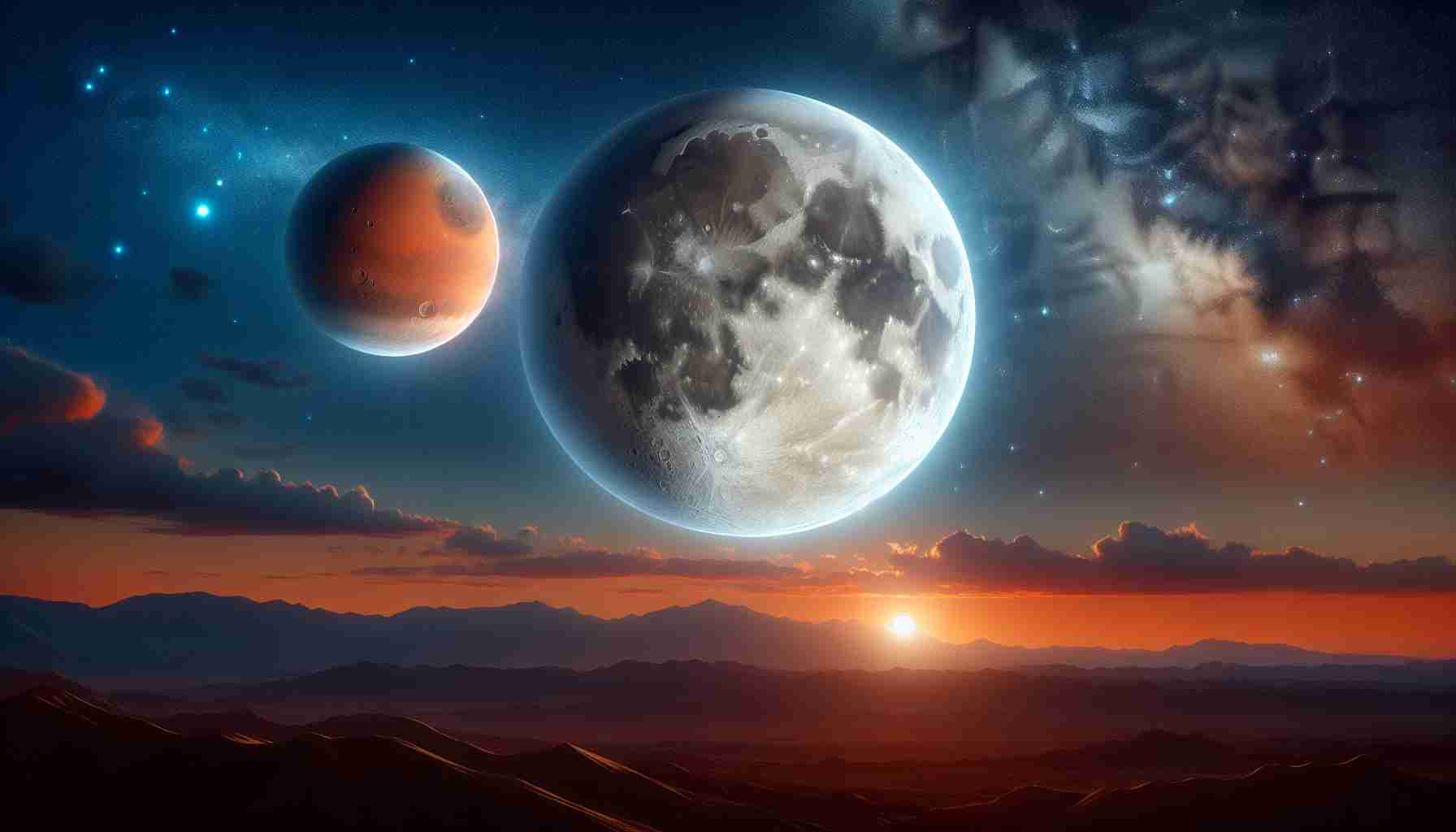- This week, observe a spectacular alignment of the moon, Mars, and Jupiter.
- On February 6-7, watch Jupiter close to the moon in Taurus, both shining brightly.
- The moon will be approximately 70% illuminated during this event.
- On February 9, Mars will join the moon, appearing only 1 to 2 degrees apart in Gemini.
- During daylight hours, Mars will be visible close to the moon but best viewed after sunset.
- A lunar occultation will occur for northern skywatchers, with Mars disappearing behind the moon.
- Optimal viewing conditions require clear skies and minimal light pollution.
Get ready for the night sky to dazzle with a spectacular celestial performance! This week, the bright moon will be joined by Mars and Jupiter in an enchanting display you won’t want to miss.
First up, overnight from February 6-7, witness the majestic Jupiter glide just 5 degrees away from the moon. As they rise together, catch a glimpse of the two shining beacons in the constellation Taurus, lighting up the night sky. As the moon transitions into a waxing gibbous, it will be about 70% illuminated, making for perfect viewing as they twinkle until the early morning hours.
But the excitement doesn’t end there! On February 9, the Red Planet, Mars, will join the moon for an even closer encounter, appearing only 1 to 2 degrees apart. Even during daylight, Mars will linger close to the moon, but after sunset, look toward the eastern sky in Gemini for a breathtaking view of the two, with Mars positioned just above the glowing orb of the moon, which will shine at about 90% brightness.
For the adventurous skywatchers in northern latitudes, a thrilling lunar occultation event awaits! Mars will appear to be swallowed by the moon, vanishing at around 1:09 p.m. EST and re-emerging at 4:30 p.m. EST. This unique sight will be visible across parts of Canada, Scandinavia, and more.
Pro Tip: Head to a spot with clear skies and minimal light pollution for the best celestial experience. Grab your binoculars or telescope, and let the universe mesmerize you! 🌌✨
Don’t Miss the Spectacular Celestial Show: A Guide to the Upcoming Lunar Events!
Upcoming Celestial Events
This week, stargazers are in for a treat with a series of dazzling displays featuring the moon, Jupiter, and Mars. As February unfolds, the night sky will come alive, culminating in some exciting celestial encounters.
Key Events to Watch For
1. Jupiter and the Moon:
– Date: February 6-7
– Description: Jupiter will be located approximately 5 degrees from the moon, a phenomenon best viewed in the constellation Taurus. As the moon enters its waxing gibbous phase, it will be around 70% illuminated, creating a brilliant backdrop for Jupiter.
2. Mars and the Moon:
– Date: February 9
– Description: Mars will grace the sky just 1 to 2 degrees away from the moon, providing a stunning sight, especially in the eastern sky around sunset. The moon will shine at 90% visibility, enhancing the view of the Red Planet positioned just above it.
3. Lunar Occultation of Mars:
– Date: February 9
– Timing: Mars will be obscured by the moon from approximately 1:09 p.m. EST to 4:30 p.m. EST.
– Viewing Locations: This event will be best visible in parts of Canada and Scandinavia, making it a rare opportunity for northern latitude skywatchers.
Why These Events Are Significant
These celestial events are not only visually captivating but also provide excellent opportunities for educational engagement and observational astronomy. They spark interest in the sciences and help bridge the gap between the public and astronomical phenomena.
Related Information
– Market Forecasts: The interest in astronomy has surged, leading to a market projection where the global astronomy market is expected to grow significantly, driven by advanced telescope technology and increased accessibility to information.
– Trends in Stargazing: With the advent of apps that track celestial events, more people are participating in stargazing than ever before, providing a boost to outdoor recreational activities.
– Use Cases of Stargazing: From educational purposes in schools to community skywatching events, there are numerous applications of astronomy that contribute to social interaction and knowledge sharing.
Frequently Asked Questions
1. What equipment do I need to view these celestial events?
– While these events can be enjoyed with the naked eye, binoculars or a telescope can enhance the experience, allowing for detailed viewing of planetary surfaces and features.
2. Are these events visible everywhere?
– While the alignment of the moon, Mars, and Jupiter will be visible in many places, the lunar occultation will be restricted to specific geographic regions, primarily northern latitudes.
3. What’s the best time for viewing the sky this week?
– The optimal viewing times are shortly after sunset for Mars and the moon alignment, while the Jupiter event can be viewed throughout the night.
Suggested Related Links
